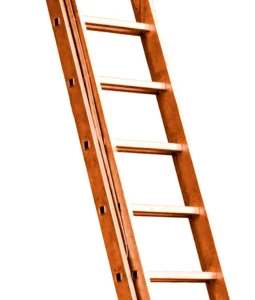Rungs, steps, or cleats are crosspieces installed on a ladder, designed as stepping surfaces to facilitate climbing. They are integral to the ladder’s structure, providing the primary means for users to ascend and descend safely.

Key Benefits:
- Safety: Designed to ensure stable footing and reduce the risk of slips and falls while climbing.
- Durability: Constructed from materials like aluminum, fiberglass, or wood, depending on the ladder’s intended use, to withstand wear and stress.
- Ease of Use: Facilitates comfortable and smart climbing by providing a reliable and consistent stepping surface.
Applications:
- Ideal for home use, providing stable stepping surfaces for tasks like attic access and maintenance.
- Important for frequent climbing tasks in offices, warehouses, and retail spaces.
- Built for durability and safety in manufacturing and construction environments.
OSHA Compliance for Rungs, Steps, or Cleats:
- Design and Construction: Ensure that rungs, steps, or cleats are securely attached and designed to support the load requirements specified for the ladder.
- Dimensions and Spacing: Adhere to OSHA guidelines for the dimensions and spacing of rungs, steps, or cleats to prevent hazards and ensure user safety.
- Regular Inspections: Conduct routine inspections to check for wear, damage, or defects that could compromise the safety of the ladder.




